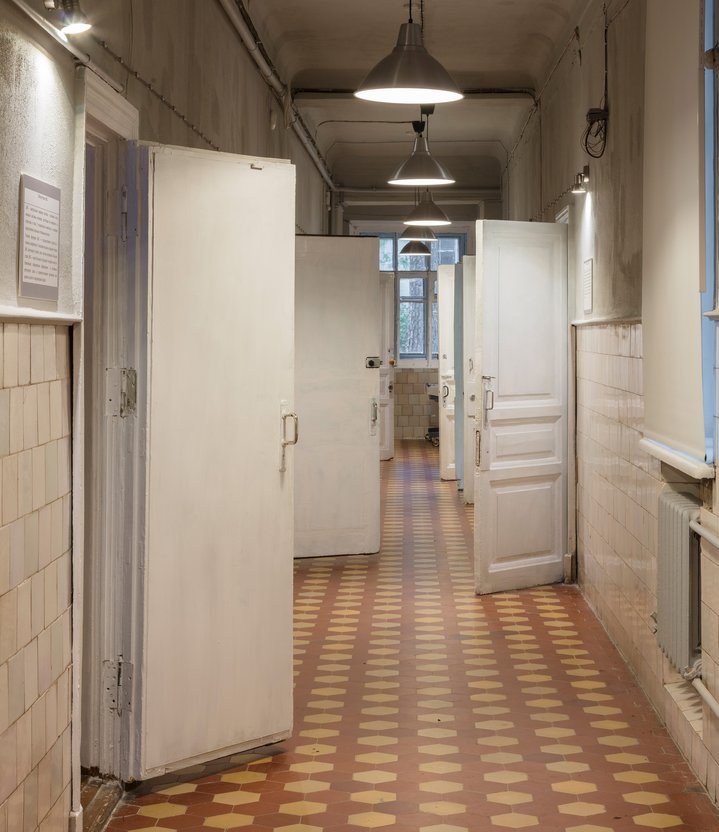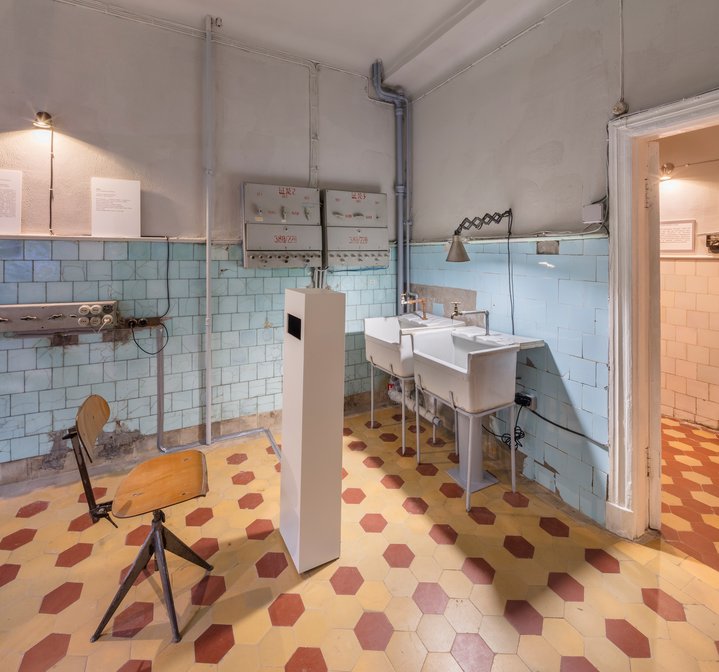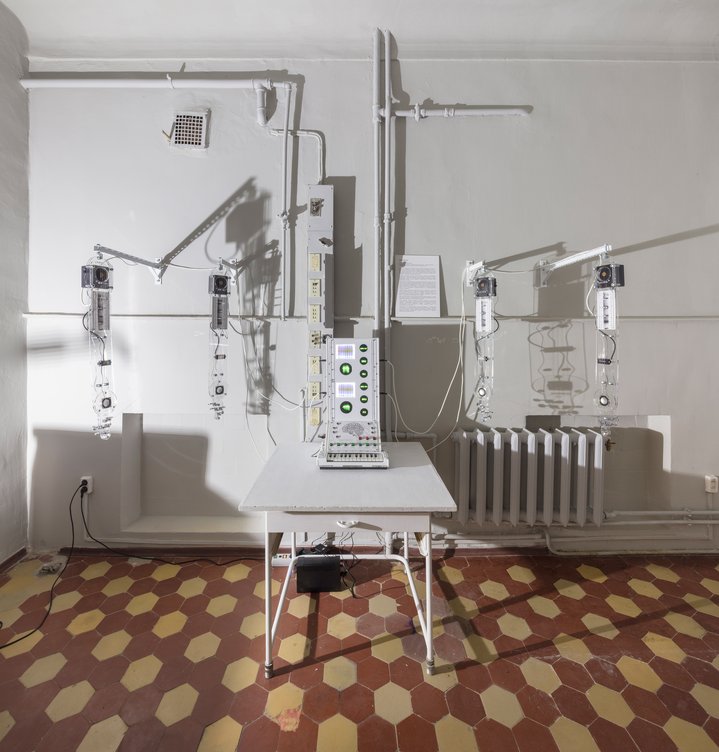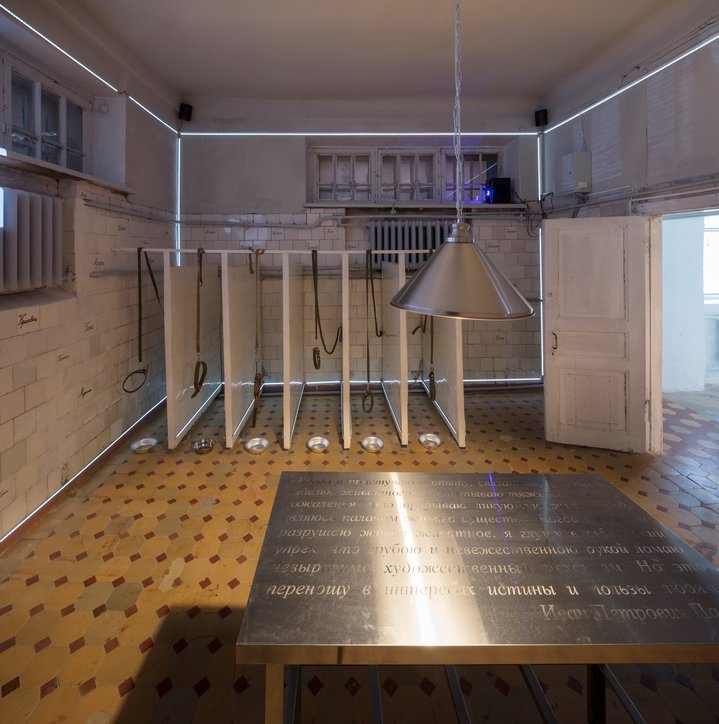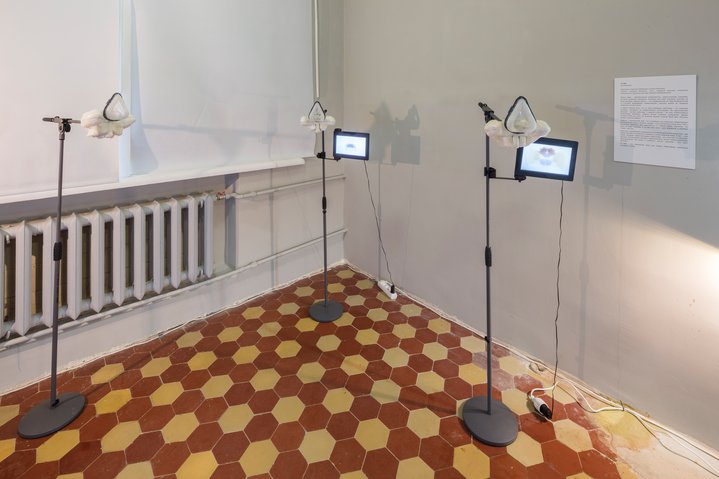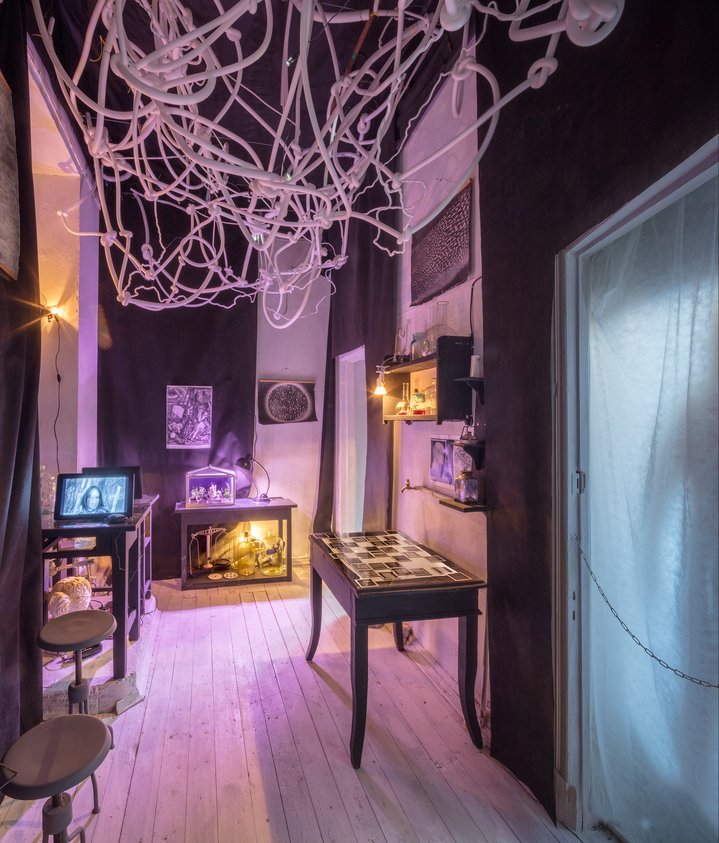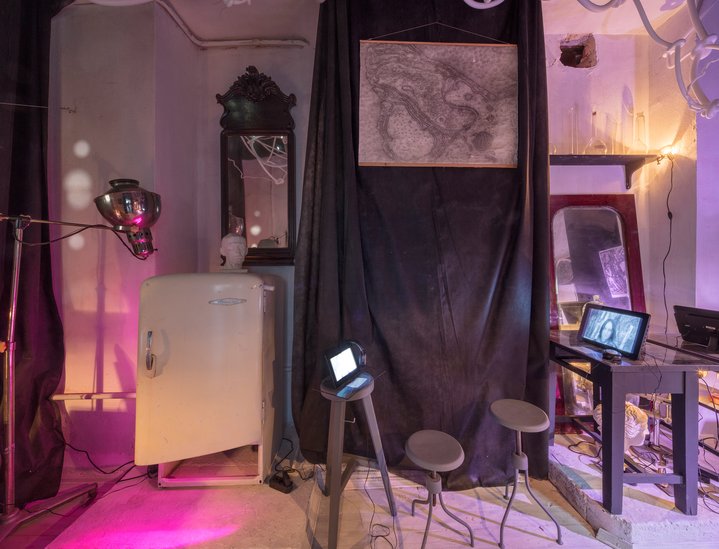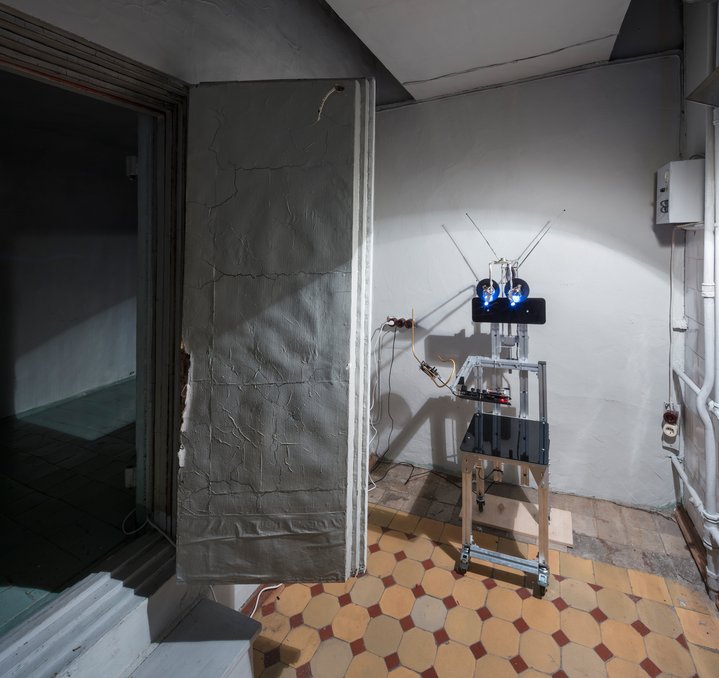The tower of silence

Where Art meets Pavlov’s dogs: the new Art & Science museum near St.Petersburg.
The home of Russia’s only permanent exhibition of Art & Science is the site of the country’s first scientific village: the Pavlov Institute in the village of Koltushi, some 20 kilometres from St. Petersburg’s centre. It’s the UNESCO-protected legacy of Russia’s first Nobel Laureate, Ivan Pavlov (1849-1936), famous for his experiments with dogs and behavioural conditioning, a method of learning based on rewards and punishments.
Growing interest over the past decade has meant that sources of funding have increasingly shifted from humanitarian to technological institutes, all with a keen interest in how art can be used for the popularization of research, according to Irina Aktuganova, the curator of the museum’s “New Anthropology” show.
Most artists would take issue with being used as a mere channel for popular science, which is why the exhibition’s creators have prioritized partnerships between artists and scientists. “The first task,” Aktuganova says, “was to get the artists into the lab.” They were found through an open call and 40 projects were eventually proposed, including one to splice genes from Lenin’s brain into a mushroom. Only 15 were ultimately selected.
The facilities have remained unchanged since Pavlov rang bells for his dogs inside soundproof chambers that would eventually assume the “Tower of Silence” as a collective name.
The downstairs corridor, where most of the exhibition is on display, evokes an asylum horror film set: curious sounds creep into the hallways. Each room is dedicated to a line of research pursued at the Pavlov Institute. Inside, the audience can watch short videos detailing the breakthroughs or questions animating a particular field before moving onto an installation that interprets these concerns in playful or poignant ways.
The “Laboratory of the central nervous system,” for example, contains a piece called ‘Inside The Black Box’ that mirrors the processes which animate our visual nerves. Assembled by the Ekaterinburg art collective Kuda Begut Sobaki (Russian for “where the dogs run to”), visual data from a glass box of fruit flies is transferred through a set of gradually simplifying neural networks, until it becomes a series of letters generated on a screen. The audience is invited to find (or project) meaning in the text assembled before their eyes, evoking the search for God’s name in the Torah.
Most of the installations are just as quirky in their approach. The ‘Laboratory of Genetics’ boasts a machine that knits scarves from designs taken from a combination of the visitor’s face and that of a fruit fly, based on a set of 16 key nucleotides.
In the following room, bee pheromones are produced as a kind of alternative communication, with a VR-like headset hanging nearby that allows the audience to see through cameras mounted on their fingers. In the ‘Laboratory of Behaviour’, I interact with a cyber-monkey, whose data was taken from the brainwaves of Jupiter. She squeals if I get too close, or draws on a screen when I bore her.
With the legacy of experiments on dogs, mice, fruit flies or even children, it’s hard to avoid the question of bioethics. Which is why the last set of installations, created by Ludmila Belova, are called ‘Expectation’ or ‘Waiting Room’, with the first half located in a back corner of the lab, where dogs used to be tied up between experiments. The room is low lit and drips with anxiety, contrasted with a quotation from Pavlov on empathy for all creatures. I’m told that all the animals (except perhaps for the fruit flies) eventually retired and lived long, happy lives.
However, the fact remains: when they were in this room, they had no idea what was coming next. And so, the second half of the installation, next door, recreates this feeling by placing human anxieties front and centre. What new diseases are we going to face? What will A.I. really mean? Will our fate differ all that much from that of the fruit flies? Expansive, twisty sculptures of neural networks mingle with interviews of artist and scientists confessing their suspicions of the future, asking us to dwell upon whatever it is we can’t keep from coming next.
The New Anthropology
Institute of Physiology named after I.P.Pavlov, Russian Academy of Science
Pavlovo village, Russia






